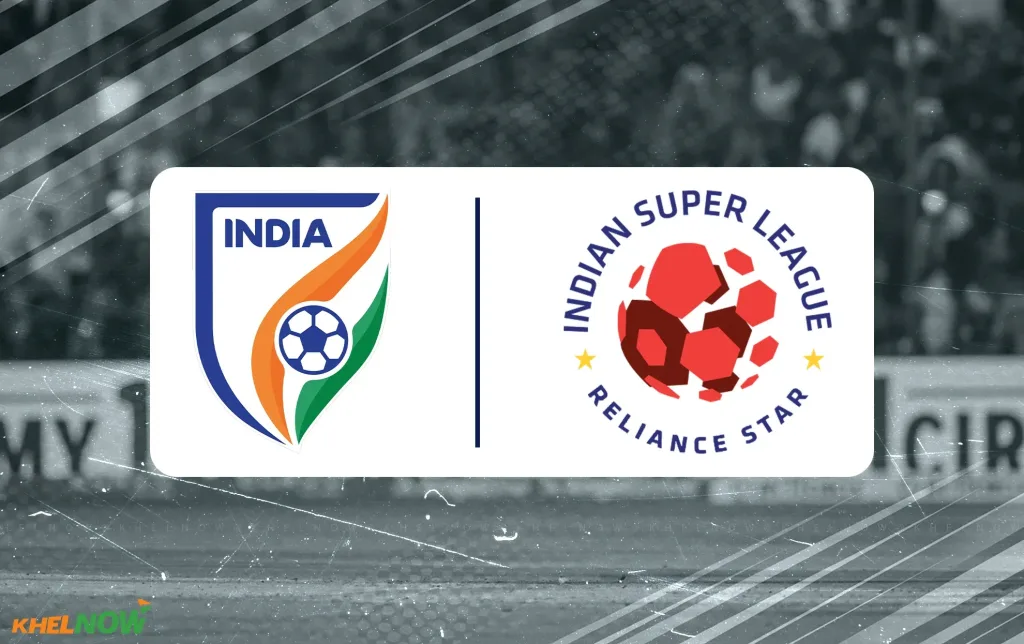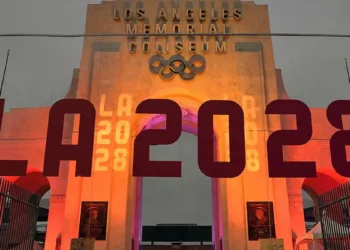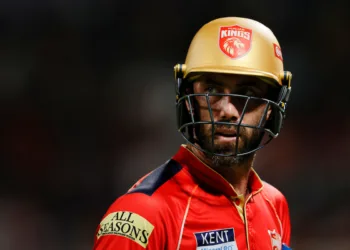The Supreme Court of India has delivered a crucial lifeline to Indian football by allowing the All India Football Federation (AIFF) and Football Sports Development Limited (FSDL) to resume negotiations over the contentious Master Rights Agreement (MRA) that governs the Indian Super League. The landmark decision, announced on Friday, August 22, 2025, by a bench comprising Justices Sri Narasimha and Joymalya Bagchi, comes as a ray of hope amid growing uncertainty surrounding the 2025-26 ISL season.
Table of Contents
Supreme Court’s Strategic Intervention in AIFF-FSDL Dispute
The apex court’s decision marks a significant shift from its earlier stance when it had prohibited AIFF from undertaking any major decisions, including negotiations over the MRA renewal. This intervention was crucial as the current agreement is set to expire on December 8, 2025, approximately one-third into the typical ISL season that runs from September to April.

The court has given both parties six days to find a solution and make progress regarding negotiations, with the next hearing scheduled for Thursday, August 28, 2025. This timeline is particularly critical as the FIFA transfer window closes on August 31, and the uncertainty has prevented ISL clubs from conducting necessary player transfers.
Background of the Legal Dispute
The MRA dispute between AIFF and FSDL has its roots in fundamental disagreements over the financial and operational framework governing the ISL. While AIFF has sought a fixed financial commitment from FSDL, the latter has favored a profit-sharing model—a structure the federation has described as uncertain and risky.
The matter reached the Supreme Court after several failed negotiation attempts:
| Negotiation Timeline | Date | Outcome |
|---|---|---|
| Initial Request | November 21, 2024 | AIFF requested renewal discussions |
| New Delhi Meeting | February 5, 2025 | Preliminary discussions held |
| Mumbai Meeting | March 5, 2025 | Further negotiations attempted |
| Court Intervention | April 30, 2025 | SC prohibited contract renewal negotiations |
| Current Status | August 22, 2025 | SC allows negotiations to resume |
Amicus Curiae’s Strong Stand on FSDL Obligations
During Friday’s hearing, Amicus Curiae Gopal Sankaranarayanan took a firm position on FSDL’s contractual obligations under the existing agreement. He emphasized that FSDL cannot use the renewal uncertainty as an excuse to avoid fulfilling its current responsibilities.
“The agreement provides for commercial rights, which is a defined term. Now, commercial rights, which is defined says all rights of any commercial nature, whatever relating to AIFF national teams, competitions, advertising rights, everything has been given to FSDL, including what they refer to as new league rights,” Sankaranarayanan stated.
Key Arguments Presented
The Amicus Curiae’s submission highlighted several critical points:
- Contractual Compliance: FSDL must strictly comply with terms during the existing contract tenure
- Operational Continuity: The organization cannot discontinue running championships and competitions
- Player Welfare: Immediate attention needed as players haven’t been paid salaries for one and a half months
- Termination Rights: AIFF has the right to terminate the contract if obligations aren’t met
FSDL’s Financial and Logistical Concerns
FSDL’s representative, senior counsel Mr. Neeraj Kaul, presented a compelling case highlighting the practical challenges of operating under uncertainty. He pointed out that investors are unwilling to step in on a year-to-year basis, especially when the annual investment exceeds ₹150 crores.
Investment Challenges Outlined
FSDL’s key concerns include:
- Infrastructure Planning: Unable to secure commitments for stadiums and pitches
- Player Contracts: Difficulty in long-term player acquisition
- Broadcasting Rights: Challenges in negotiating media partnerships
- Commercial Sponsorships: Sponsors reluctant to commit to short-term arrangements
“Our difficulty is that no one comes in these tournaments (to invest) on a year-to-year basis. The investment for approximately a year is over 150 crores. No one will be interested in an interim arrangement,” Kaul explained to the court.
Impact on Indian Football Ecosystem
The MRA dispute has created a ripple effect throughout the Indian football ecosystem, affecting multiple stakeholders:
Immediate Consequences
| Affected Party | Impact | Current Status |
|---|---|---|
| ISL Clubs | Suspended operations, halted salary payments | Waiting for resolution |
| Players (Indian & Foreign) | Unpaid salaries for 1.5 months | Living in uncertainty |
| Support Staff | Suspended contracts | Financial hardship |
| Transfer Market | Stalled player movements | FIFA window closes Aug 31 |
| Broadcast Partners | Uncertain about season schedule | Planning difficulties |
Broader Implications
The dispute threatens India’s standing in Asian football:
- AFC Compliance: Risk of losing developmental grants
- Continental Competitions: Minimum 24-match season required for Asian club competitions
- FIFA Monitoring: World governing body closely watching the situation
- FIFPRO Involvement: Global players union concerned about player welfare
Justice Narasimha’s Acknowledgment of FSDL’s Contribution
Justice Sri Narasimha acknowledged FSDL’s significant contribution to Indian football over the years, stating that their efforts had created substantial goodwill for the sport. He emphasized that this marks the beginning of a new chapter for Indian football.
“For the goodwill that you have created over so many years, and we are very positive that we are opening a new chapter for sports, and I think your contributions will be very, very substantial. So you work on it, sit with them (AIFF),” Justice Narasimha encouraged.
| Financial Impact Analysis | Amount (₹ Crores) |
|---|---|
| Annual FSDL Investment | 150+ |
| Player Salary Arrears | 15-20 |
| Club Operational Losses | 25-30 |
| Broadcast Revenue at Risk | 100+ |
| Total Economic Impact | 290+ |

The MRA Framework and Its Significance
The Master Rights Agreement (MRA) is a comprehensive 15-year agreement originally signed in 2010 that governs:
Commercial Rights Structure
- Broadcasting Rights: Television and digital streaming arrangements
- Sponsorship Rights: Commercial partnerships and advertising
- Merchandising: Team and league-related merchandise
- Ticketing: Stadium revenue and fan engagement
- New League Rights: Expansion and development opportunities
Operational Framework
The MRA defines FSDL’s responsibilities including:
- League organization and management
- Stadium arrangements and infrastructure
- Player welfare and safety protocols
- Broadcasting production and distribution
- Marketing and promotional activities
Critical Timeline Ahead
With the Supreme Court setting August 28 as the next hearing date, several critical milestones loom:
Immediate Priorities (August 22-28)
- Negotiation Sessions: AIFF and FSDL must conduct intensive discussions
- Player Welfare: Address immediate salary payment issues
- Transfer Window: Facilitate urgent player movements before August 31
- Season Planning: Develop contingency plans for ISL 2025-26
Medium-term Challenges (September-December)
- Season Launch: Traditional September start for ISL
- Broadcast Schedules: Finalize television and digital arrangements
- Sponsorship Activations: Ensure commercial partnerships remain intact
- Player Contracts: Resolve contractual uncertainties
Club Representatives and Player Advocacy
The counsel representing former Indian football captain Bhaichung Bhutia advocated strongly for FSDL to fulfill its obligations for the current season and conduct the 2025-26 ISL. This intervention highlights the growing pressure from football legends and stakeholders.
| MRA Timeline & Key Dates | Significance |
|---|---|
| 2010 | Original MRA signed (15-year term) |
| December 8, 2025 | Current MRA expires |
| August 22, 2025 | SC allows negotiations to resume |
| August 28, 2025 | Next Supreme Court hearing |
| August 31, 2025 | FIFA transfer window closes |
| September 2025 | Traditional ISL season start |
Club Solidarity
AIFF organized discussions with ISL clubs on August 14, 2025, where it was agreed that:
- Club concerns would be conveyed to the Supreme Court
- Player hardships would be highlighted
- Stakeholder interests would be prioritized
- Unified approach would be maintained
Financial Stakes and Investment Concerns
The scale of investment in the ISL makes the MRA negotiations particularly crucial:
Annual Investment Breakdown
| Category | Estimated Investment |
|---|---|
| Player Salaries | ₹80-90 crores |
| Infrastructure | ₹25-30 crores |
| Broadcasting Production | ₹15-20 crores |
| Marketing & Promotion | ₹10-15 crores |
| Operations & Logistics | ₹15-20 crores |
| Total Annual Investment | ₹150+ crores |
Legal Precedents and Future Implications
The Supreme Court’s handling of the AIFF-FSDL dispute could set important precedents for sports governance in India:
Regulatory Framework
- Contractual Obligations: Clarity on fulfilling existing agreements
- Stakeholder Rights: Protection of player and club interests
- Commercial Partnerships: Framework for sports business relationships
- Judicial Intervention: Role of courts in sports administration
The Path Forward: August 28 Hearing
As both parties prepare for the crucial August 28 hearing, several factors will determine the outcome:
Key Negotiation Points
- Financial Structure: Fixed commitment vs. profit-sharing model
- Contract Duration: Length of renewed agreement
- Performance Metrics: Success indicators and targets
- Exit Clauses: Terms for potential termination
- Player Welfare: Immediate and long-term protections
Potential Outcomes
The August 28 hearing could result in:
- Negotiated Settlement: Agreed framework for MRA renewal
- Court-Mandated Solution: Judicial intervention with specific terms
- Interim Arrangements: Temporary measures for 2025-26 season
- Extended Negotiations: Further time for discussions
International Monitoring and Compliance
FIFA, AFC, and FIFPRO are closely monitoring the situation, with potential consequences for non-compliance:
AFC Requirements
- Minimum 24 competitive matches per season
- Proper league structure and governance
- Player welfare standards
- Financial transparency

FIFA Oversight
- Compliance with international standards
- Player protection measures
- Good governance principles
- Dispute resolution mechanisms
Read More: Eberechi Eze’s Arsenal Return: The Final Piece in Their Championship Puzzle?
FAQs
What is the MRA dispute between AIFF and FSDL about?
The MRA (Master Rights Agreement) dispute centers on the renewal terms for the 15-year agreement that expires December 8, 2025. AIFF wants a fixed financial commitment while FSDL prefers a profit-sharing model, creating uncertainty about the ISL’s future.
Why did the Supreme Court previously prohibit AIFF from negotiating the MRA renewal?
The Supreme Court had earlier prohibited AIFF from undertaking major decisions, including MRA negotiations, as part of broader governance reforms. This was reversed on August 22, 2025, allowing negotiations to resume.
How does the MRA expiry affect the 2025-26 ISL season?
The current MRA expires on December 8, 2025, which falls one-third into the typical ISL season (September-April). This timing creates operational uncertainty, forcing FSDL to put the season on hold pending resolution.
What are the immediate consequences for players and clubs?
ISL clubs have suspended salary payments to players for 1.5 months, with some clubs halting first-team operations entirely. Around 5,000 people’s livelihoods are affected, including Indian and foreign players, support staff, and officials.
When is the next Supreme Court hearing and what’s expected?
The next hearing is scheduled for August 28, 2025. Both AIFF and FSDL have six days to negotiate and present progress. The court will review their discussions and potentially provide further directions for resolving the dispute.








